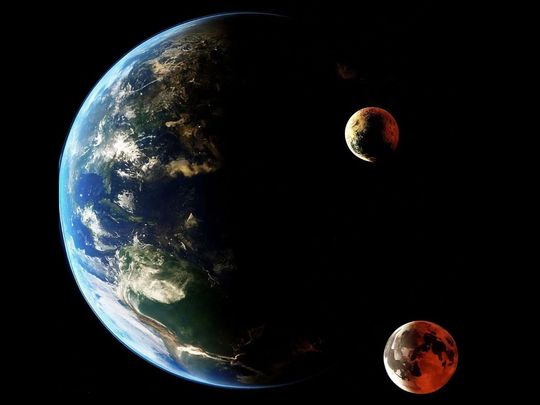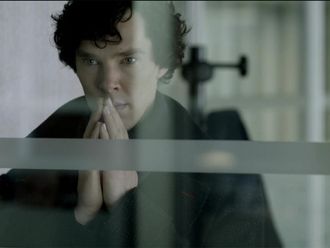
What if you looked up at the night sky and spotted not one, but two moons?
Click start to play today’s Spell It, where we follow our ‘genuine’ curiosity about how different the Earth would be, if it had two moons.
American astrophysicist Neil F. Comins wrote a book in 2010, called What if the Earth Had Two Moons?, where he posited certain ways life on Earth would change, with two moons in the night sky:
1. Massive tides
The ocean’s tides result from a combination of the moon’s gravitational force and the force directed away from the moon, caused by the Earth’s rotation around the barycentre – the point around which, two celestial bodies orbit. When a second moon is added to the equation, however, the effect would be dramatic. According to Comins, the tides on Earth would be eight times higher than they presently are. Erosion would occur far faster than we currently experience, and tidal waves would run up the mouths of rivers, destroying things in its path. Coastal civilisations, therefore, would be nearly impossible.
2. Moonlight and eclipses
Our nighttime surface would be five times brighter than what we now experience during a full moon. The light would be so bright, you could easily read a book by it. A brighter environment would impact how people and animals behave in predator-prey cycles. Camouflage, for instance, would become more refined, and nocturnal creatures would develop more refined senses for hunting. A second moon would lead to more eclipses – there would be one every month, or in every orbit of that moon.
3. The lunar calendar would change
The moon takes about 29.5 days to complete a lunar cycle. If a second moon existed, it would go through the same cycle of phases but only take about 10 days to complete. This means Earth’s inhabitants would be able to see the second moon in different phases within the span of a day. Civilisations that base their timekeeping on lunar cycles would have more convoluted calendars with two moons.
4. Prettier sky
If the Earth’s second moon had a noncircular orbit, it might look like Jupiter’s moon, Io, and be covered with volcanoes. There would be so many eruptions on its surface, some volcanic debris would be likely to leave the moon’s surface and form a debris field around Earth, or even enter our atmosphere. This would result in far more frequent shooting stars, as well as more meteorite impacts.
5. The moons would eventually collide
Our moon is moving away slowly from Earth, due to the complexities of gravitational push and pull between the two celestial bodies. If a second moon existed, it would be impacted by these forces too. The moon that’s closer to Earth would likely move away at a faster rate than the one that’s farther away, eventually leading to a disastrous collision. If that were to happen, large meteors would likely fall to Earth, causing potential mass extinction. However, the remaining debris would likely form a ring around Earth, and in time, a new single moon would again appear in the night sky.
What do you think of this hypothetical situation? Play today’s Spell It and tell us at games@gulfnews.com.







